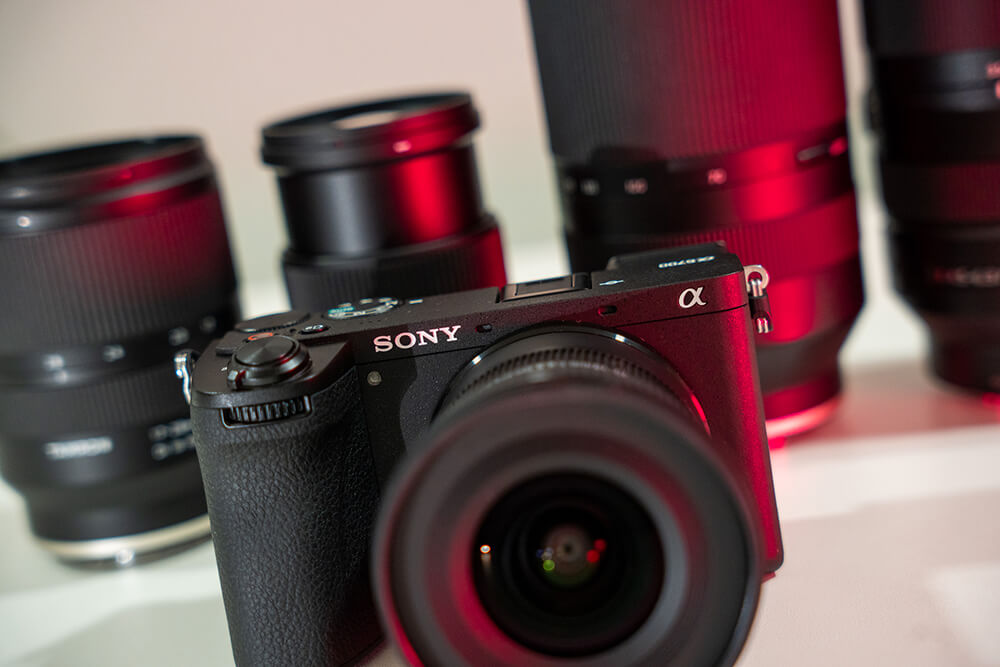There are over 100 different lenses to choose from for the Sony A6700.
I’ve been shooting with APS-C cameras for many years and the lenses are substantially lighter, smaller and cheaper. With so many options it can be quite difficult to figure out which one to get.
The 4 Best Zoom Lenses:
- Sigma 10-18mm f/2.8 DC DN
- Sigma 18-50mm f/2.8 DC DN
- Tamron 17-70mm f/2.8 Di III-A VC RXD
- Sony 70-350mm f/4.5-6.3 G OSS
The 4 Best Prime Lenses:
If you buy anything after clicking the links that go to Amazon, we receive a small commission.
The 8 lenses on this list cover all different types of photography; ultra-wide landscape, travel, portraits, even birds and wildlife. I’ve shared some more recommendations at the bottom, but they didn’t make the top 8 list (will explain why).
1. Sigma 10-18mm f/2.8 DC DN
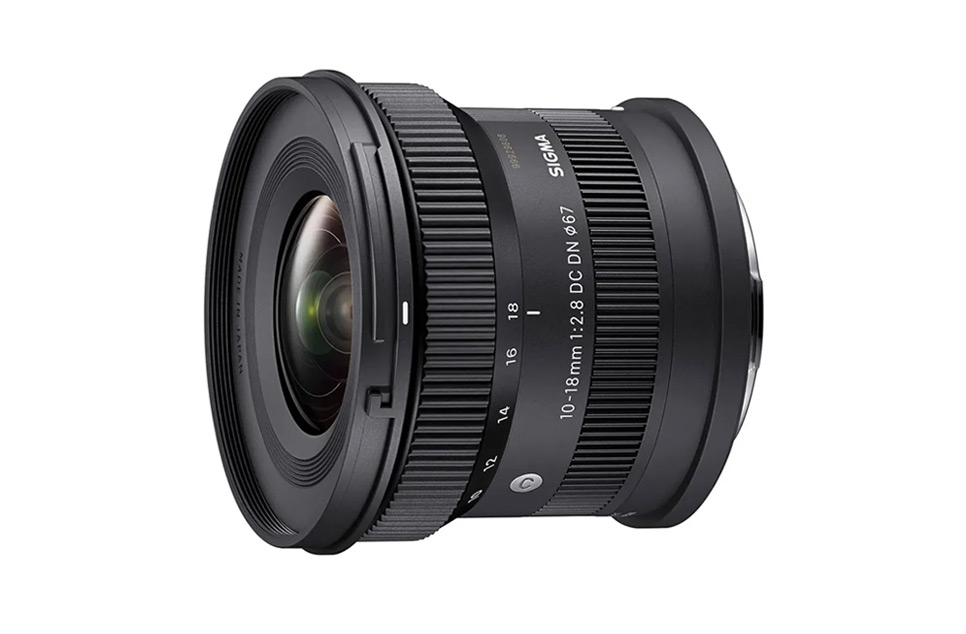
Best for: Landscape, architecture, travel, vlogging and low light
Filter Diameter: 67mm
Weight: 260g (9.2 oz.)
The Sigma 10-18mm f/2.8 DC DN is the newest lens on this list (released in late 2023).
It’s an ultra-wide, super compact option if you are looking for a travel, vlog, architecture and landscape lens. As a matter of fact, Sigma states it is the “lightest f/2.8 ultra-wide zoom” in the world!
It weighs a mere 9.2 ounces (260g) and measures 2.4 inches long. A perfect companion for the A6700, it balances nicely and barely takes any space. Despite being small, it features a manual focus ring but you won’t find any buttons on it. I have been shooting with it since it got released and it really adds a lot to the APS-C system.
Image quality is superb, auto focus is very quick and accurate, which makes this a great lens for both photos and video. Paired with the A6700’s amazing AF, it’s really hard to get out of focus shots.
It’s got a maximum aperture of f/2.8, which is a huge advantage for low light photography. Night city shots, indoor parties and weddings, it allows you to let in enough light without raising the ISO too much, or shooting with a long shutter speed.
With such a wide-angle, distortion and flare are common problems, but like many lenses made in the past few years, this Sigma controls it very well and all of these issues can be easily corrected in Lightroom.
You can buy the Sigma 10-18mm f/2.8 DC DN at Amazon here.
2. Sigma 18-50mm f/2.8 DC DN

Best for: Traveling, portraits, streets, landscape, low light
Filter Diameter: 55mm
Weight: 290g (10.2 oz.)
My all-in-one choice award goes to the Sigma 18-50mm f/2.8 DC DN. It’s extremely lightweight and compact.
I love the size of the A6700 and often want to travel with a lens that complements it. The Tamron I recommend below gives you a bit more in terms of reach, but is also noticeably bigger and heavier. It all comes down to personal preference and what I’m shooting.
The 18 to 50mm range is perfect for whatever life throws at you; traveling in cities, landscape, taking pictures of people and food, pets, generally anything you can think of. Paired with the 10-18mm above, you are covered for pretty much everything possible except for wildlife.
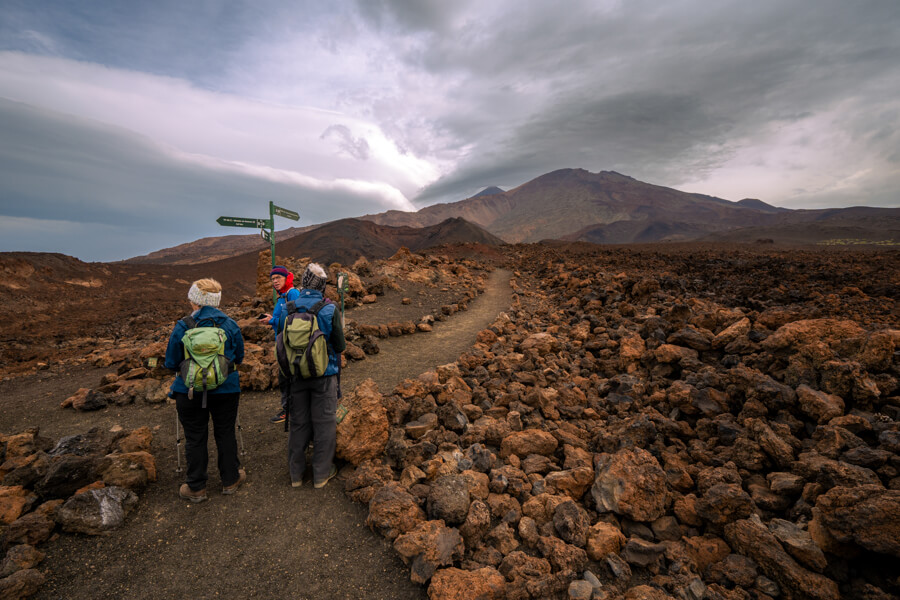
You can see my full review of the Sigma 18-50mm f/2.8 here.
Image quality and colors are great, auto focus is quick and optically this lens is a steal for the money. I’m always impressed with how they manage to keep these f/2.8 zooms so small. One of the reasons is that there is no Image Stabilization in it, but that’s not an issue because the Sony A6700 has that built-in anyways.
You can buy the Sigma 18-50mm f/2.8 DC DN at Amazon here.
3. Tamron 17-70mm f/2.8 Di III-A VC RXD
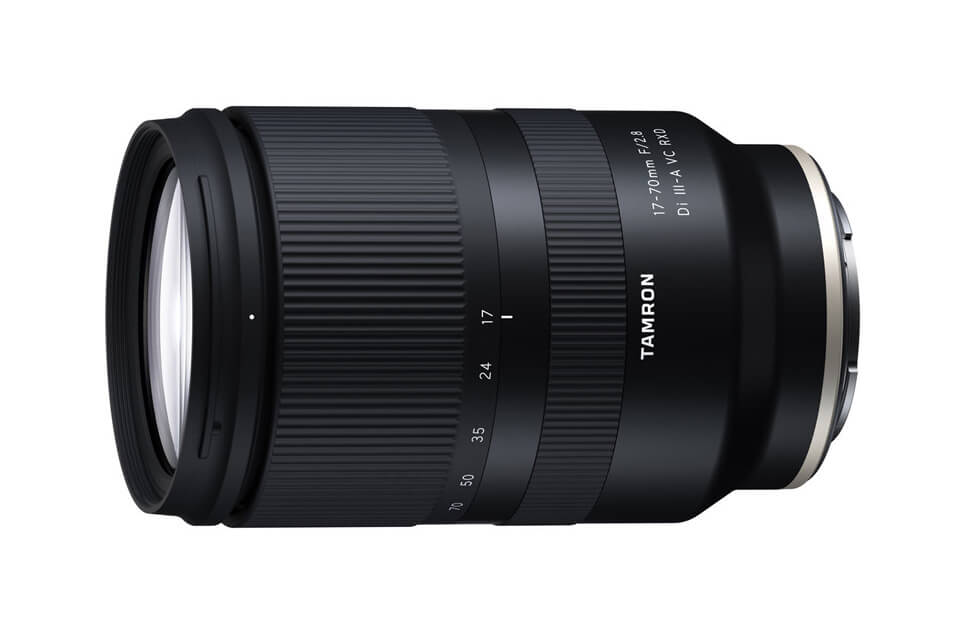
Best for: Traveling, portraits, food, streets, landscape, low light
Filter Diameter: 67mm
Weight: 525g (18.52 oz.)
The Tamron 17-70mm f/2.8 Di III-A VC RXD has a scary looking name, but you don’t have to understand any of these terms.
Why did I include it in this list? Because sometimes you only want to bring 1 lens that can do it all. No switching, no extra luggage, just go from 18 to 70mm in a split second while still having that big f/2.8 aperture at all lengths.
Most of the time, I prefer my compact 18-50mm, but if you don’t care about the size then this Tamron is your best option. Don’t get me wrong, it’s not big by any means, but the range + VC (image stabilization) do come at a cost.
Auto focus is nearly silent, quick and reliable, basically no major differences between any lenses I mentioned so far. At 17mm you might notice a little bit more chromatic aberration in the corners, but as far as sharpness and quality go, the lens performs very well at all lengths.
It’s weather sealed (better than the Sigma above), feels good in hands (neither plastic or full metal) and has a closest focusing distance of 0.19m for some cool close up shots. That extra 20mm of reach compared to the 18-50mm is enough to make a difference (even 17 vs 18mm will be noticeable).
You can buy the Tamron 17-70mm f/2.8 Di III-A VC RXD at Amazon here.
4. Sony 70-350mm f/4.5-6.3 G OSS
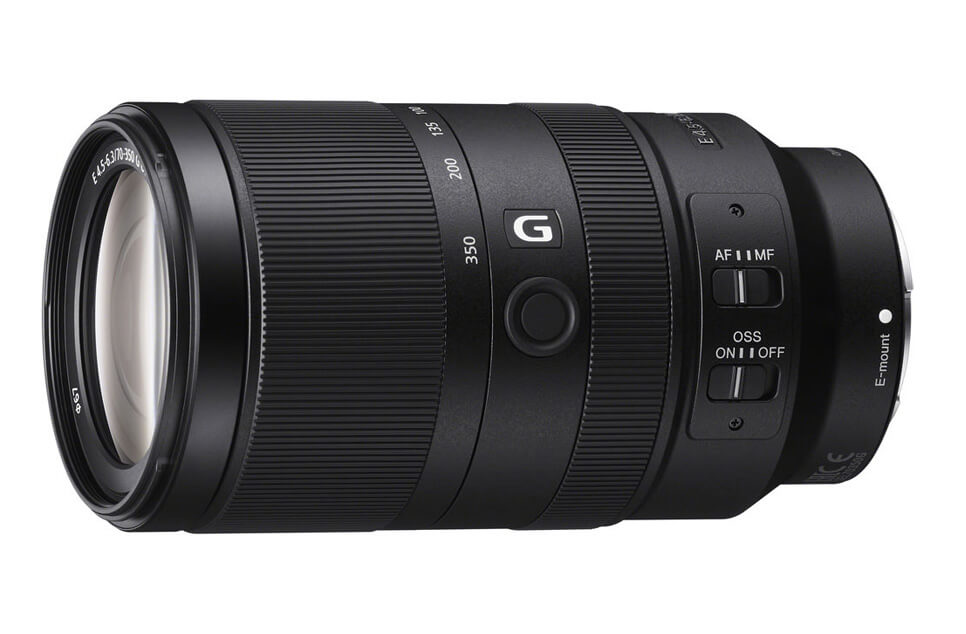
Best for: Outdoor action, sports, animals and birds
Filter Diameter: 67mm
Weight: 625g (22.1 oz.)
For sports and wildlife, the Sony 70-350mm f/4.5-6.3 G OSS is hands down my favorite lens.
See, on a full frame camera, 350mm is just about okay for wildlife/birds. The Sony A6700 has that 1.5x crop factor though, which makes this 70-350mm equivalent to a 105-525mm on full frame. Talk about reach!
There are plenty of telephoto options out there, but this Sony costs less than $900 and manages to weigh only 22 ounces. I know it sounds a lot when you compare it to others on this list, but it’s almost nothing against something like the Sigma 150-600mm at 74.1 oz (made for FE mount, similar field of view).
Is it worth the money? Absolutely, it has great optical quality, very fast and silent auto focus, and most importantly it feels super easy to carry around the whole day. For small birds, safaris, outdoor wildlife, you won’t get tired after hand holding this lens for an hour straight.
You can see my full review of the Sony 70-350mm f/4.5-6.3 here.
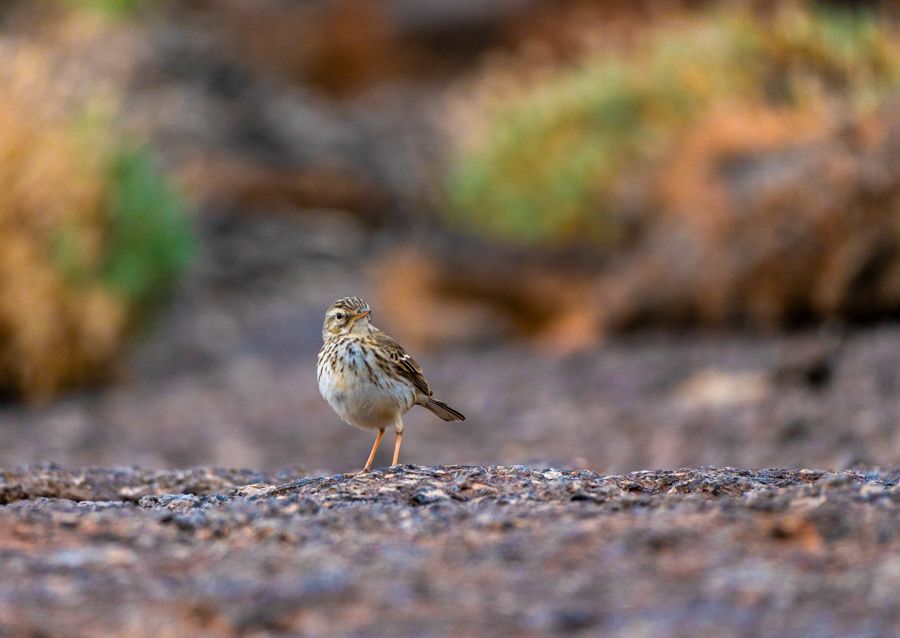
For indoors, the aperture size is not that good. You’ll have to raise the ISO of your A6700 to at least 1600 to capture action shots, so be ready to use some noise reduction features in Lightroom. Still, at this price, I’m not complaining at all, just remember that f/7.1 at 350mm is mainly for outdoors. You will rarely shoot below ISO 500 for moving animals/subjects anyways.
You can buy the Sony 70-350mm f/4.5-6.3 G OSS Amazon here.
5. Sony 11mm f/1.8
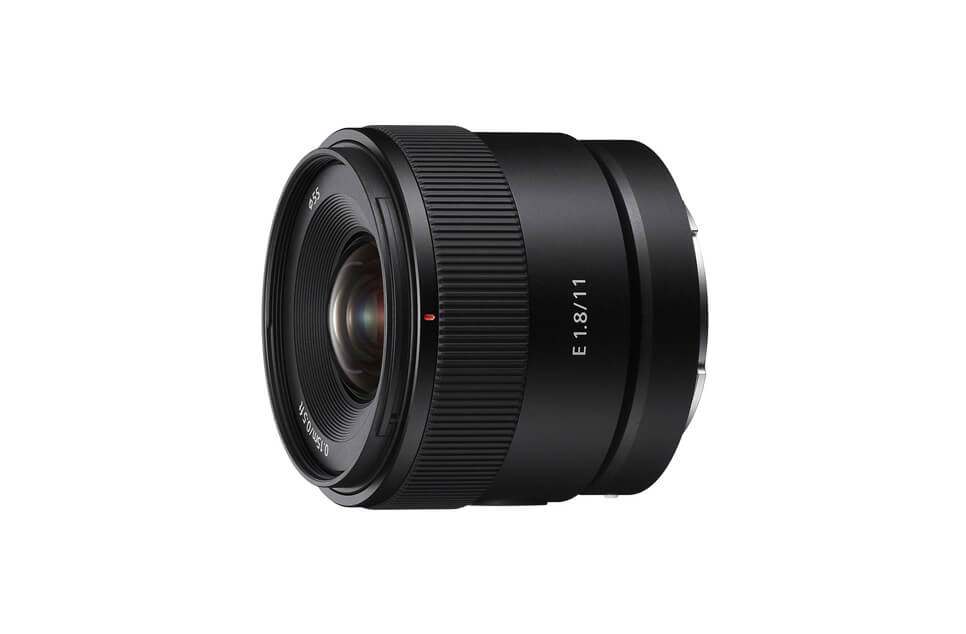
Best for: Landscape, architecture, travel, vlogging and astrophotography
Filter Diameter: 52mm
Weight: 182g (6.4 oz.)
The first prime lens I recommend is the Sony 11mm f/1.8.
I’m a big fan of high quality, big aperture but small sized primes, and this one hits all the spots.
It’s incredibly sharp and a dream come true for landscape, indoors photographers and vloggers. Not only that, it’s affordable and super compact.
With 2 linear focus motors, auto focus is pretty much the best you can expect. Video wise, focus breathing is very well controlled, same goes for vignette and chromatic aberration. You can easily shoot at f/1.8 and expect great results.
For low light and astrophotography, having an f/1.8 aperture is a must. If you’re a landscape shooter then you’ll shoot between f/4-f/16 most of the time, but it feels good knowing that this tiny lens can still shoot at f/1.8.
For vlogging, this is pretty much the only Sony prime I’d recommend. It’s equivalent to 16.5mm on full frame, which is still wide enough to capture a lot in your scene and not be awkwardly close to your face.
If you can’t decide between this and the Sigma 10-18mm f/2.8, it really comes down to the 1 stop aperture difference. They’re similarly priced, but for some people having that extra zoom matters more than f/1.8 vs f/2.8.
You can buy the Sony 11mm f/1.8 at Amazon here.
6. Sigma 16mm f/1.4 DC DN
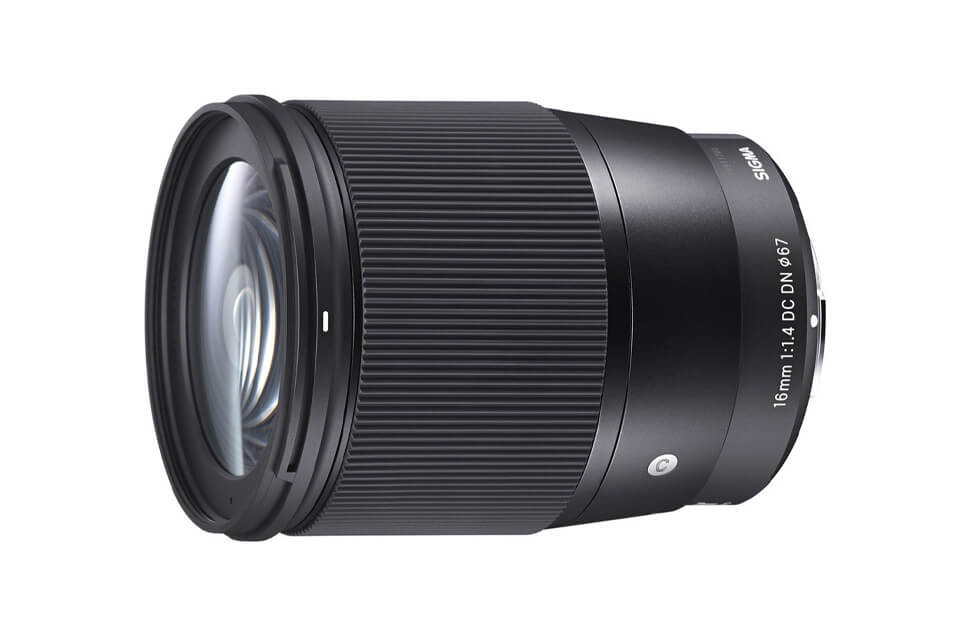
Best for: Landscape, architecture, travel and astrophotography
Filter Diameter: 67mm
Weight: 405g (14.3 oz.)
Back to Sigma! This Sigma 16mm f/1.4 DC DN is equivalent to 24mm on full frame.
First, the good stuff. It’s tack sharp, focuses quickly (uses a stepping motor) and handles flare/vignetting very well. It costs a little bit under $400, making it a steal compared to Sony’s new 15mm f/1.4G.
The biggest downside to me is that it’s quite big/heavy for an APS-C lens, especially when you compare it to the competition. Sure, it’s an f/1.4, but there’s no image stabilization or any buttons on it, yet this lens still manages to weight 400g (14.29 oz.).
Not a deal breaker for some, especially given it’s amazing performance for $400, but for some of you looking to travel “silently”, I’ll talk about the new Sony 15mm f/1.4G below (it’s twice the price).
Still, if you’re looking to get the most bang for your buck, an $800 budget can get you this 16mm f/1.4 as well as the 30mm f/1.4 below.
You can buy the Sigma 16mm f/1.4 DC DN at Amazon here.
7. Sigma 30mm f/1.4 DC DN
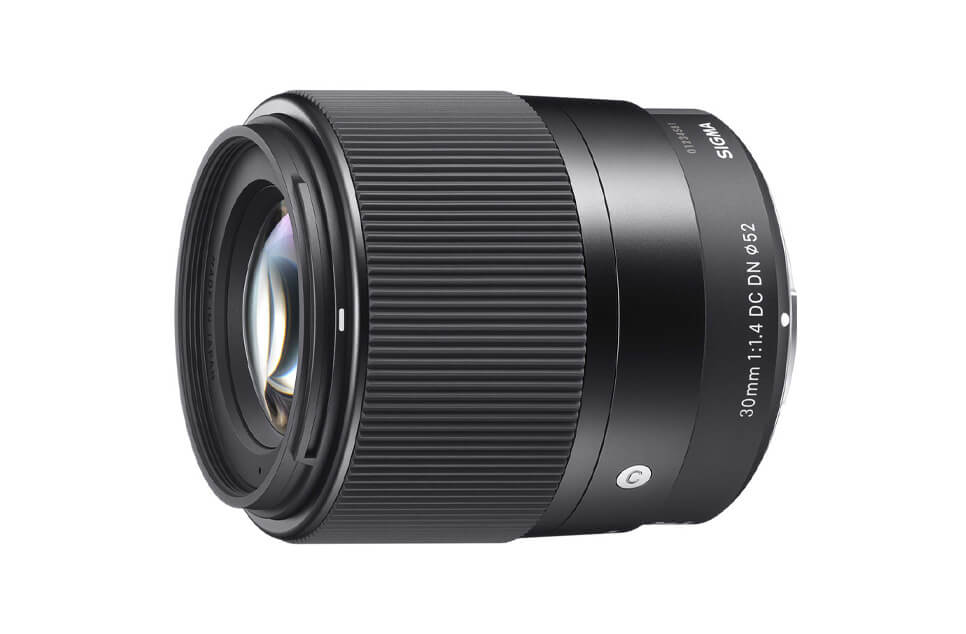
Best for: Travel, landscape, portraits, scenery, street, night time
Filter Diameter: 52mm
Weight: 265g (9.3 oz.)
The Sigma 30mm f/1.4 DC DN is the most popular lens for Sony’s APS-C cameras. It’s affordable, razor sharp and that 30mm focal length is ideal for so many situations.
If I only had to recommend one prime, this would be it. You can use the 30mm f/1.4 for everyday stuff, portraits, traveling, weddings, you name it. 30mm is equivalent to 45mm on full frame, and that’s the closest field of view to how we see the world through our eyes.
Then there’s the f/1.4 aperture; at this price, the lens is a steal. You can expect nearly noise-free images in low light because at f/1.4, that’s bringing in 2 stops more light than f/2.8 (most zooms available today). This means your ISO 3200 can now go down to 800!
As expected, auto focus works quickly and the quality is truly impressive. Put this lens on the A6700 and travel care-free.
You can buy the Sigma 30mm f/1.4 DC DN at Amazon here.
8. Sigma 56mm f/1.4 DC DN

Best for: Portraits, cars, weddings, details, flowers, pets
Filter Diameter: 55mm
Weight: 280g (9.3 oz.)
For portraits, weddings and razor sharpness, check out the Sigma 56mm f/1.4 DC DN.
The number 56mm might seem odd, but that’s due to the field of view it delivers compared to full frame; 85mm.
For decades, 85mm has been synonymous with being the ultimate portrait focal length. The bokeh/out of focus parts look beautiful and really make your subject stand out. If you’re looking for the “blurry” background that phones nowadays try to emulate, this is it.
The Sigma 56mm is affordable and one of the main reasons why so many people decide to invest in Sony’s APS-C lineup. High quality glass, focus that works well even in videos, and most importantly, good prices.
If you consider yourself a prime shooter, this would be the lens to complete the set. You can get all 3 Sigma lenses for around $1000.
You can buy the Sigma 56mm f/1.4 DC DN at Amazon here.
2 Extra Lenses to Consider
One of the reasons why I don’t recommend only Sony lenses is because they’re more expensive and don’t always justify the higher price tag. You might get 95% of the performance for half the price with another brand.
However, there are a couple of Sony lenses that are outstanding and don’t really cost that much more than Sigma/Tamron’s choices.
These are the 2 ultra-wide lenses I’d recommend for the Sony A6700 if your budget is a little bit higher.
Sony 10-20mm f/4 G PZ
Instead of Sigma 10-18mm
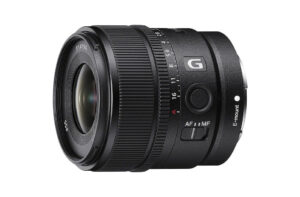
If you don’t care about f/2.8 and mainly shoot landscape or never in low light, the Sony 10-20mm f/4 G PZ is an even more compact zoom than Sigma’s 10-18mm I recommend above. It weighs a mere 178g (6.3 ounces) which makes it the lightest lens on my list.
The 10-20mm f/4 was released in 2022 so it’s an ideal lens for videos (focus breathing, auto focus performance, power zoom etc.). Plus, if you record videos in SLOG3 profile where you almost always have to use an ND filter, not having f/2.8 is not a deal breaker anyways.
To sum up, for 1 stop smaller aperture you get an even smaller ultra-wide with 2mm more reach than the Sigma. If video or landscape is 99% of what you do, consider buying this lens or even look for a used one.
Sony 15mm f/1.4 G
Instead of Sigma 16mm f/1.4
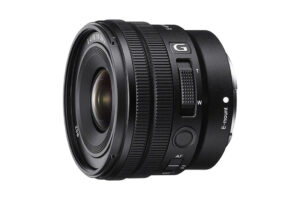
Before the release of this new Sony 15mm f/1.4 G, the Sigma 16mm f/1.4 was easily your only good choice for an ultra-wide prime. It’s quite bulky but what else can you get?
Here comes Sony with a way smaller, lighter and optically even better lens. Same f/1.4 aperture, but it makes the Sigma’s size look ridiculous. Unfortunately, it costs twice as much so it’s out of reach for many that aren’t too sure about having a fixed wide prime.
If size/weight is your main priority, and you want the best for the money, get the Sony 15mm instead.
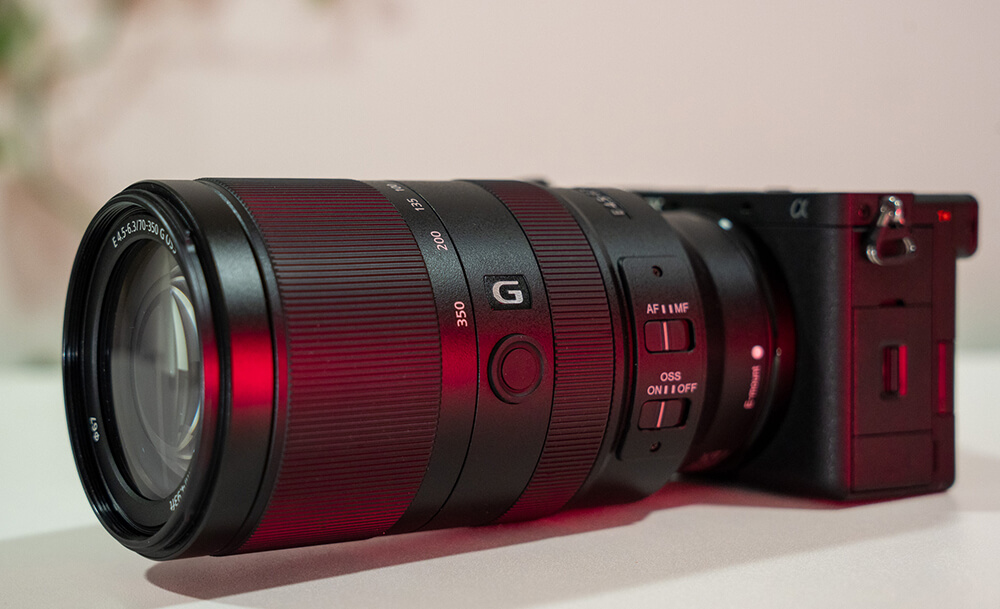
Which Lens for Portraits?
For portrait photography, you want a big aperture and medium to telephoto focal length. This will make your subject stand out and give you a blurry background.
The best prime lens is the Sigma 56mm f/1.4 DC DN. It’s tack sharp, super affordable and a must-have for portraits, pets and weddings. It’s equivalent to a 85mm lens on full frame and you won’t find a professional without this focal length.
The best zoom would be the Tamron 17-70mm f/2.8 because it gets you 20mm closer than Sigma’s 18-50mm. Both are perfectly fine, but that extra reach allows for a better subject separation.
Which Lens for Wildlife/Sports?
The Sony 70-350mm f/4.5-6.3 G OSS is my favorite lens for animals and action happening outside. You won’t find anything better at this price (~$900) and so much reach. It’s great for big animals and smaller birds, although for the latter you can never be too close.
It’s weather sealed and best of all, won’t hurt your back after shooting for the whole day.
Which Lens for Travel?
My favorite is the Sigma 18-50mm f/2.8 DC DN. Small, light and optically great. Because of that f/2.8 aperture I’m always happy to take it regardless of the time of the day, or if I’m going to shoot indoors/outdoors.
If you don’t care about f/2.8 because (maybe you’re using a prime with a bigger aperture) and only care about reach, check out the Sony 18-135mm f/3.5-5.6. I didn’t include it in this list but it gets the job done.
Which Lens for Landscape?
A lot of people associate landscape with ultra-wide lenses, but you’d be surprised how many photographers use standard, or even telephoto lenses to shoot. Having too many things in your photographs is often a bad thing because you don’t know where to look at.
With that in mind, the wide Sigma 10-18mm or the Sigma 18-50mm f/2.8 DC DN are your best candidates. Having f/2.8 is irrelevant because you’ll usually shoot between f/5.6-f/16, but hiking lightweight helps a lot. With backpacks, gear, food etc., every gram saved helps. If you ever try astrophotography though, the big aperture will come in handy.
Get the Sony 15mm f/1.4 G if you want a weather-sealed prime.
Which Lens for Vlogging?
For hand-held vlogging, especially of yourself, you need to be super wide. I would recommend the Sigma 10-18mm f/2.8 due to its focal length, size and focus.
If you want a prime, your only option is the Sony 11mm f/1.8. Why? Because you’ll most likely use some stabilization mode on the A6700, which always includes a slight crop. All of a sudden that 11mm looks more like a 13-15mm. Still ideal, but imagine the same crop on the 15mm and it turns into a ~20mm lens.
Sony A6700: My Other Guides
- What’s the best memory card for the Sony A6700? Here’s my Sony A6700 SD card recommendation.
- For better photos and better workflow, look at my list of Top 7 Accessories for Sony A6700.
- What are the only 3 lenses you will ever need? Check out my The Only 3 Lenses You Need for APS-C.
- The only APS-C zoom you will ever need: Sigma 18-50mm f/2.8 DG DN Review in 2024.
- For wildlife and sports photography, look at my Sony 70-350mm f/4.5-6.3 Review.
- Do you want to take better pictures? I wrote a beginner friendly guide for shutter speed and aperture.


